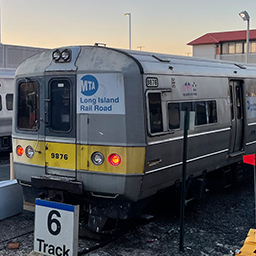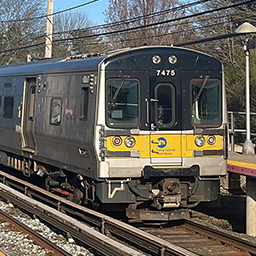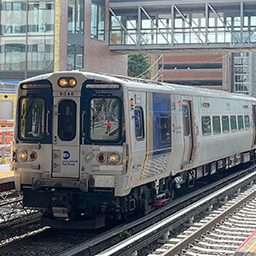Basic Information
Began Operations: c. 1834
Number of Stations: 126
Areas Served -
- Boroughs of NYC
- Queens County
- Kings County (Brooklyn)
- Manhattan
- Nassau County
- Town of Hempstead
- Town of North Hempstead
- Town of Oyster Bay
- Suffolk County
- Town of Babylon
- Town of Islip
- Town of Brookhaven
- Town of Huntington
- Town of Smithtown
- Town of Riverhead
- Town of Southold
- Town of East Hampton
Overview
The Long Island Rail Road, commonly abbreviated as "LIRR" is the busiest commuter railroad in North America, with more than 70 million riders each year riding the system from Long Island to New York City for their daily commutes to work. It is also the oldest commuter railroad in North America, as it has been continuously operating under it's original charter was established. (In layman's terms, it has been running non-stop since 1834). Given that it has been operating for that long, it is no surprise that this railroad has a lot of history around it. In fact it has a lot of history that even I have yet to know about. However, given that this page is more of an overview rather than a history lesson, I will not be going deep into the history side of things.
The railroad is very huge, with the right of way covering more than 70 miles end to end from the westernmost point of the LIRR, New York Penn Station, to the easternmost point of the LIRR, which is Montauk station. It is to be said though that these 70 miles of track are not continuous. In fact these tracks are spread across 11 different "Branches" in the system. To provide a better example of what I am talking about, I have included a map below.

This map is property of the Metropolitan Transportation Authority and has been downloaded and preserved on this website's content servers. For any copyright concerns, please contact me.
There are 11 branches of the Long Island Rail Road. All of them are unique in their own ways, with operational quirks, unique history, as well as the type of rolling stock permitted to go on said branches. Before I go in depth on each of the things I mentioned, here is a list of all the LIRR branches in alphabetical order.
- Babylon
- City Terminal Zone
- Far Rockaway
- Hempstead
- Long Beach
- Montauk
- Oyster Bay
- Port Jefferson
- Port Washington
- Ronkonkoma
- West Hempstead
The railroad has 126 stations spread across these 11 branches, with a grand majority of these stops being located in Nassau County west of Route 110. Seven of these branches are fully electrified, with two being partially electrified, and two branches being only diesel. Below is a list of said branches:
- Fully Electrified
- Babylon
- City Terminal Zone
- Far Rockaway
- Hempstead
- Long Beach
- Port Washington
- West Hempstead
- Partially Electrified:
- Port Jefferson
- Ronkonkoma
- Diesel Only
- Montauk
- Oyster Bay
Of course, like with everything, there are exceptions to this rule. On the Oyster Bay Branch, there is a few feet of third rail going from Mineola to East Williston. There is electric service going there, but it is so rare and infrequent that it isn't worth mentioning.
Now with the partially electrified routes, here's how it works for both branches. On the Ronkonkoma Branch, on paper, the terminus is Ronkonkoma, which is true, but in reality, the line goes all the way to Greenport. Ronkonkoma is the terminus for electric fleet going west to New York City, while Greenport is the terminus for very limited service trains mainly originating at Ronkonkoma. These trains are usually referred to as a "scoot." On the Port Jefferson branch, Port Jefferson is the terminus for diesel trains, while Huntington is the terminus for electric trains. There were plans to electrify the whole branch which unfortunately never came to fruition.
Rolling Stock
As of September 27th, 2023, these are the current rolling stock running on the system:




last updated 9/28/2023
